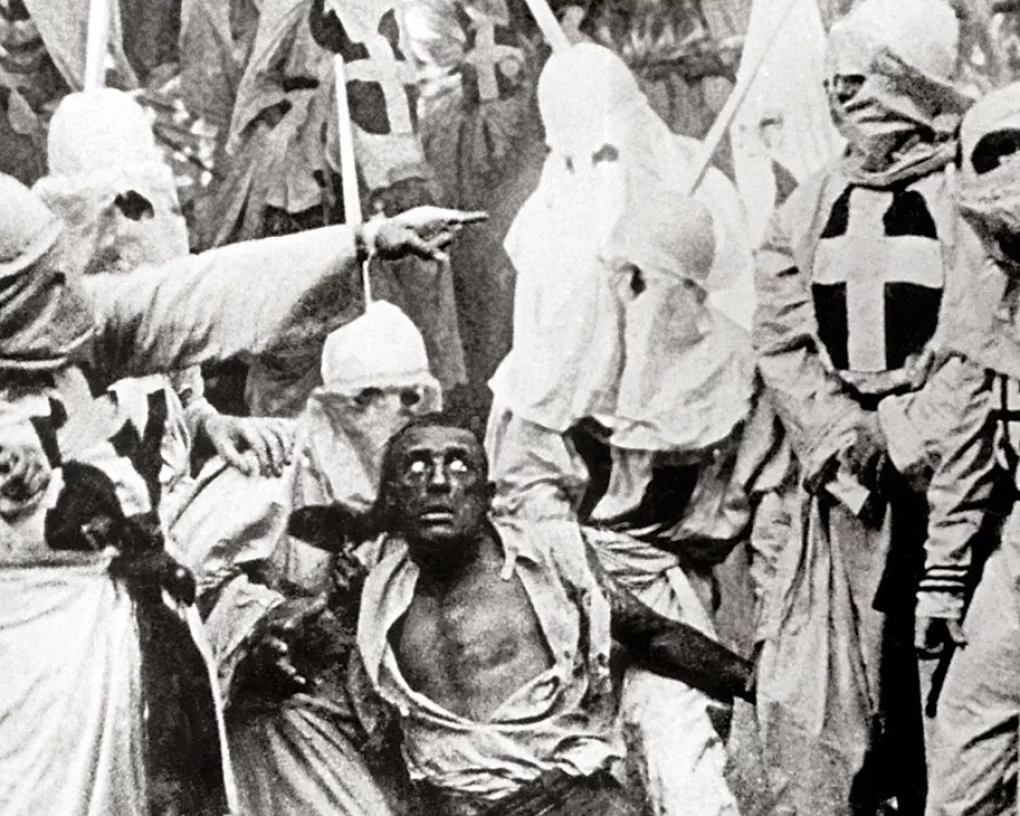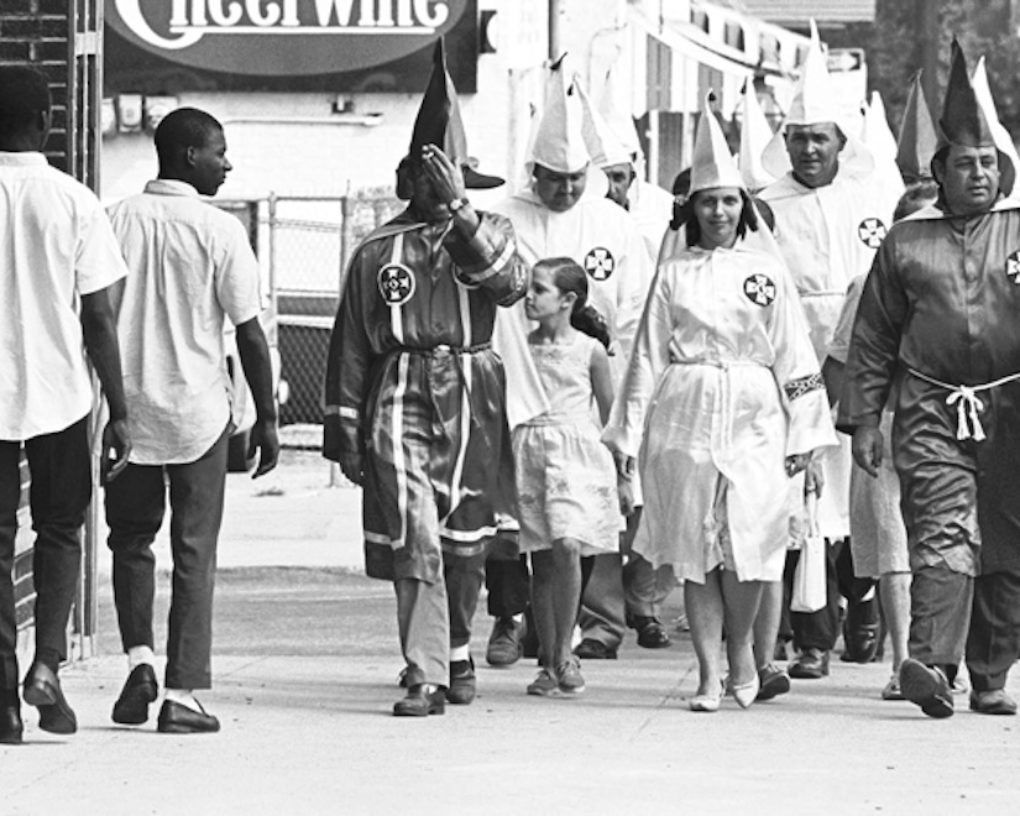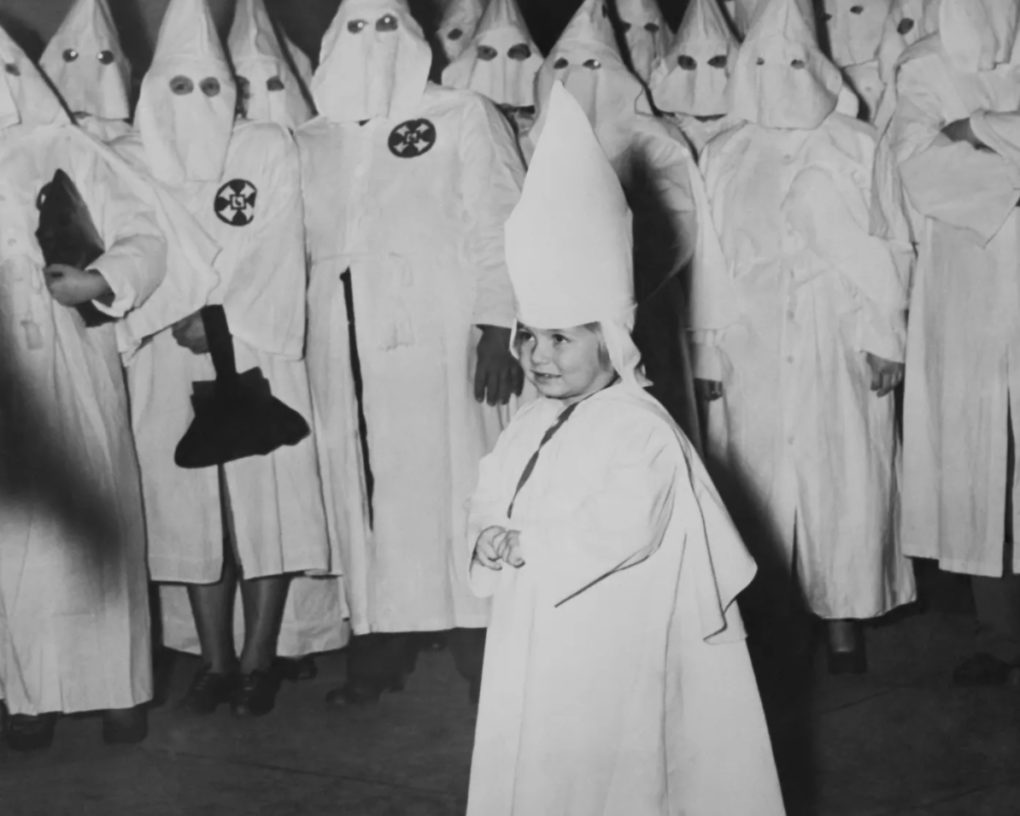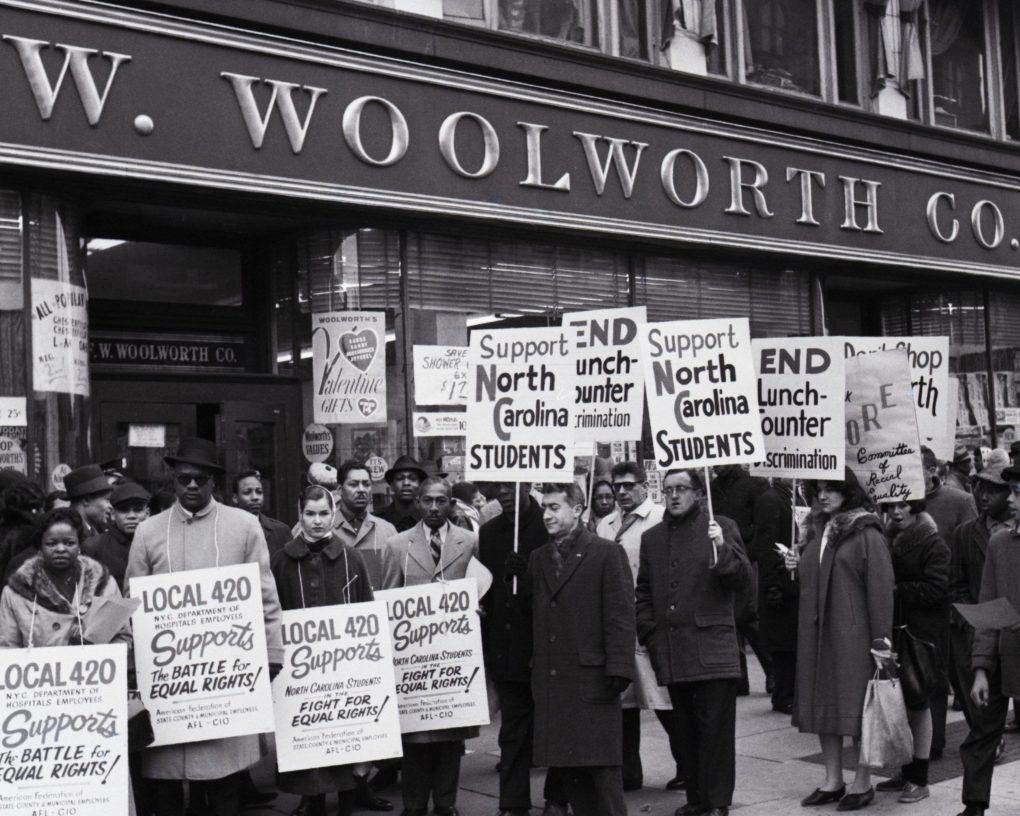Racial Terror and the Klan
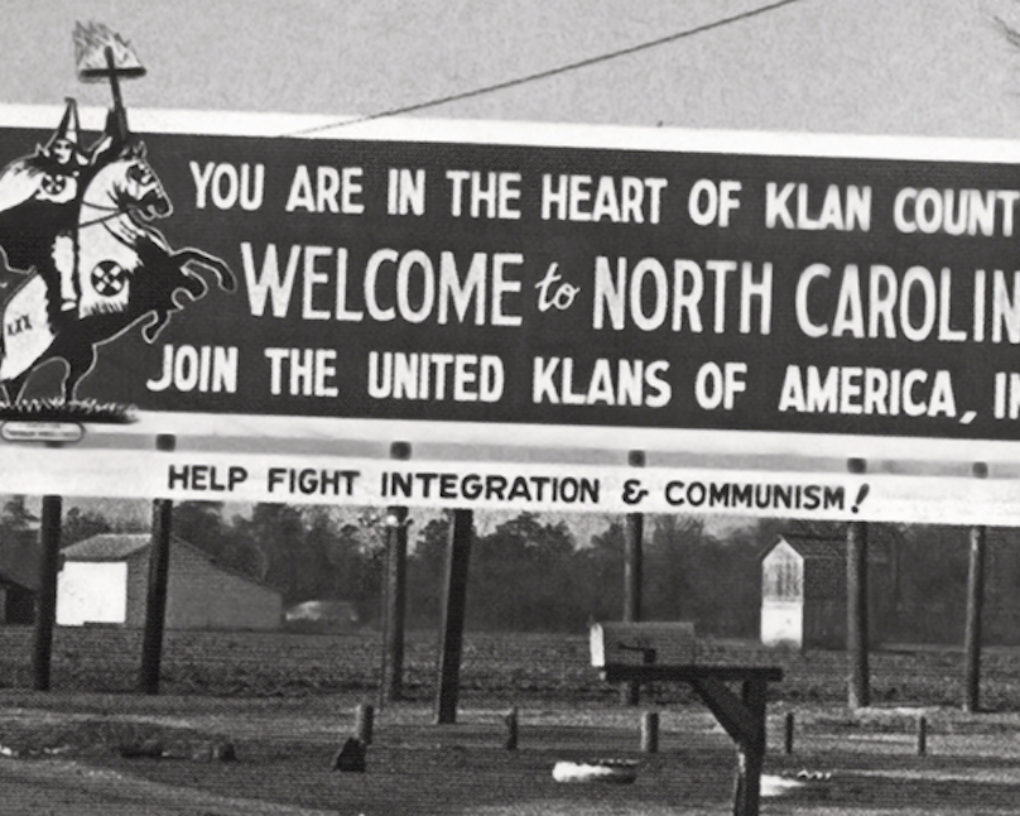
By Dr. Will Boone.
As a young guitarist, one of Freeman Vines’ early mentors was a white man named Oscar Hopper. Vines was fond of Mr. Oscar, but the friendship didn’t sit well with his mother. “Ma told me all the time,” Vines recalls, “‘The Ku Klux Klan is gonna get you, boy, hanging ‘round with that white man.’”
These were not just the idle worries of an overprotective mother. Freeman Vines came of age during a time when the Ku Klux Klan’s presence in eastern North Carolina was especially large and active. They marched in broad daylight through small town streets and held rallies in fields and pastures where giant burning crosses lit the night sky. Acts of Klan violence sporadically made the papers. Many more went undocumented.
For black eastern North Carolinians, an encounter with the Klan could happen at any time. The fears of Freeman Vines’ mother were rooted in this reality.
The Klan appeared in North Carolina immediately following the Civil War and has been here ever since. Most of that time, however, the group has been an underground organization with a very small membership. But, in times of social upheaval and economic uncertainty, their numbers temporarily swell. The post-Civil War Klan, for example, mostly fizzled out by the early 1870s.
But the economic crisis and political conflicts of the 1890s set the stage for both the emergence of stringent Jim Crow policies and a major resurgence of the Klan.
The 1920s saw another resurrection of the Klan, driven partially by new media and popular culture. Films were an enthralling new form of entertainment for Americans, and the 1915 film Birth of a Nation was an early blockbuster. It included scenes depicting klansmen as morally superior warriors crusading against sexually degenerate black men.
A Georgian named William J. Simmons organized a revamped KKK almost immediately after seeing the film and used its images as the basis for the group’s uniforms, iconography, and practices of cross-burning.
The new Klan spread rapidly, aided in part by a flood of negative media coverage that provided the group with national publicity and, paradoxically, helped make them more popular than ever.
The leader of North Carolina’s branch of the Klan from 1922 until 1927 was Henry A. Grady who was also a superior court judge. Many prominent white citizens became Klan members during this era. Dan “D.T.” Dale, who grew up in Fuquay-Varina, North Carolina in the 1920s, recalled in a 2003 interview that, although it was a secret society, it was widely understood “that the best people [in town] were all in the Klan: the town leaders, deacons in the church, maybe the mayor.”
Although it might initially sound strange, most North Carolina Klan members in the 1920s were opposed to physical violence. When Oliver Moore was lynched in 1930, the Klan had all but disappeared in North Carolina, in part because members of the 20s-era Klan did not want to be associated with blatant acts of violence such as Moore’s murder. In their estimation, lynch mobs were uncouth rabble-rousers while they were respectable politically engaged citizens.
What is clear from our historical vantage point, however, is just how little difference there is between a lynch mob and an organization devoted to the systematic disenfranchisement of a race of people. Both groups are inherently violent, whether that violence manifests physically, emotionally, or spiritually.
Both groups traumatize communities in ways that echo down through generations.
Freeman Vines was born in 1941. They were three resurgences of the Klan during his formative years.
The first occurred soon after World War II, when some whites worried that the social and economic gains made by blacks during the war years might upset the reign of white supremacy. In the mid-1950s, Klan activity again swelled as a response to the Supreme Court’s Brown v. Board of Education decision.
This instantiation of the Klan committed dozens of acts of violence across North Carolina. They were disgraced, however, in 1958 when 500 armed Native Americans of the Lumbee tribe showed up to a rally outside of Maxton, North Carolina and sent the Klansmen scrambling in fear. The event was widely covered in the press.
The Lumbee leader of the raid, a respected World War II veteran named Simeon Oxendine, was featured on the cover of Time magazine. Klan members gained a public reputation as cowards, and the organization faded once again into the shadows.
But a third Klan resurgence occurred in the 1960s as an attempt to counter the Civil Rights Movement. Membership in North Carolina ballooned. By the mid-1960s there were more Klan members in North Carolina than all the other Southern states combined.
In 1965, Klan rallies were the most attended political events in the state.
In the 1960s, African Americans in eastern North Carolina were surrounded by reminders of the Klan’s presence. Vehicles bore bumper stickers such as “Be a man, join the Klan.”
Businesses posted not-so-subtle coded messages in their windows: TWAK, for example, stood for “Trade with a Klansman;” “Keep Kool Kids” was another.
The hate group erected several billboards along major roads and highways. One read: “You are in the heart of Klan country. Welcome to North Carolina.” Another said, “Help fight Communism & Intergration, KKKK Welcomes you to Smithfield.” [The word “Integration” was misspelled. The four Ks stand for “Knights of the Ku Klux Klan”]. The last of these billboards remained standing until 1977.
White men associated with the 1960s Klan perpetrated a number of violent acts. They used dynamite to explode the cars of civil rights activists in New Bern. In Harnett County, they abducted two friends—one white and one black—at gunpoint and tortured them with knives. Several other acts of violence were documented across the state and many more likely went undocumented.
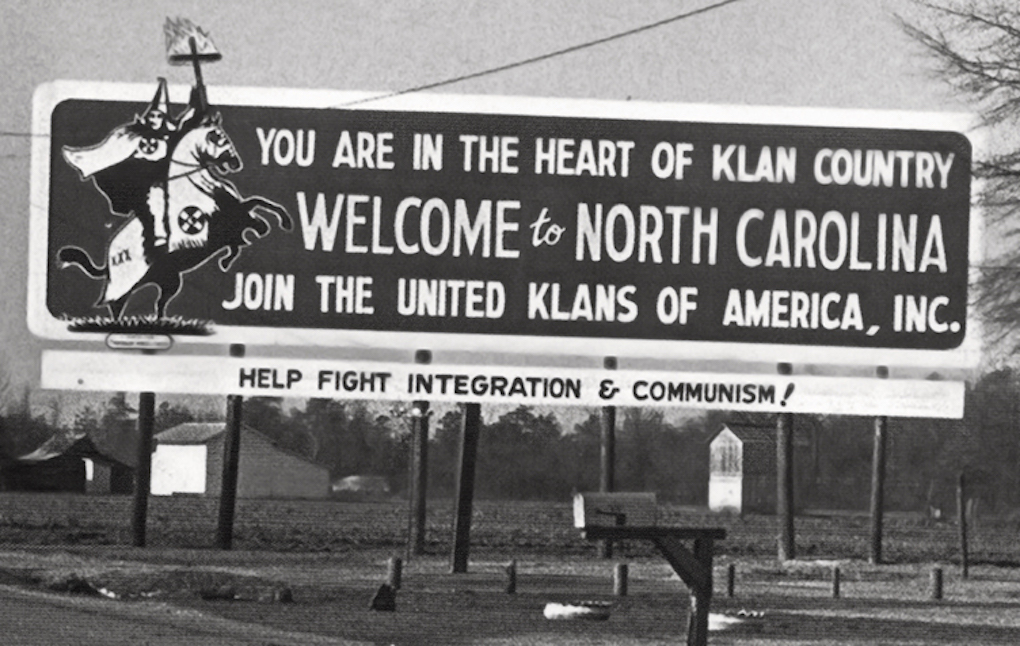
White men associated with the 1960s Klan perpetrated a number of violent acts. They used dynamite to explode the cars of civil rights activists in New Bern. In Harnett County, they abducted two friends—one white and one black—at gunpoint and tortured them with knives. Several other acts of violence were documented across the state and many more likely went undocumented.
Most North Carolina Klan members of the 1960s, however, would have denied that theirs was a violent organization. They tried to present themselves as family-friendly. Their rallies—which occurred nightly in 1965—took the guise of country carnivals. They had games for kids and live music. Members served barbecue plates and raffled off coconut cakes and beach trips. Attendees would reverently sing the national anthem. There would be prayer. Photographs from 1960s rallies often show children dressed in Klan robes.
Several Klan chapters formed “ladies auxiliary” units during this era. These women played an important role in the Klan’s attempts to shape their public image. Sybil Jones, state leader of the Klan’s ladies auxiliary, insisted at a rally in 1966 that the Klan “is not a hate organization, instead it stands for just and right.”
When Callie Wiser, the director of a 2015 documentary about the North Carolina Klan, asked a former member about her experience in the ladies auxiliary, she said, “You know, it was like my church group is now, we would get together and talk about the needs of the community, we would make cookie baskets and send them to the hospital. You know, it sounds crazy, but that’s what it was for so many people. It’s hard to ignore the other part of it, but at the time, it didn’t feel like we were part of something nefarious.”
These comments help us see what the Klan truly represented in 1960s North Carolina. Members like the woman quoted above could participate in Klan activities and feel no disconnect whatsoever from other aspects of their lives. The analogy here might be: white supremacy was to these people what water is to fish. It was not something they questioned, but a fundamental fact of existence. Joining the Klan, then, was not a radical act.
It was the opposite. People joined the Klan not because they were looking for changes in society, but because they were scared of change. The Klan upheld the order of things already in existence.
Many whites in eastern North Carolina feared that the Civil Rights Movement would ineradicably alter the fabric of society. They turned to the Klan out of self-preservationist instincts. Although some of them may have had no malice in their hearts, they nevertheless offered themselves to become vectors of hatred. A ladies’ auxiliary unit that made cookie baskets, for example, was a great boon to Klan leaders because it helped make their brand of hatred seem benign and broadly palatable.
But of course, there is no benign hatred. If, for some whites in eastern North Carolina, the Klan meant gathering together, playing games, and eating barbecue, for Freeman Vines’ mother, the Klan meant that she had to fear for her son’s life every time he went to visit a friend. The former came at the expense of the latter.
By the late 1960s, the North Carolina Klan had again fizzled out. There was corruption among its leaders and other structural problems.
But also, as historian David Cecelski points out, “many whites learned that the world did not end with school desegregation. They decided to move forward, and to make the best of the new day.”
For the last 50 years or so, the Klan has been confined to the shadows. Yet the Klan still captures people’s imaginations. New radio stories, podcasts, books, and documentaries continue to appear. Even if the Klan doesn’t have many members, they still have an audience.
Part of this fascination surely comes from the way the Klan embodies self-preservationist impulses that we recognize in ourselves. The Klan didn’t invent white supremacy. White supremacy was already the order of society. Whenever this order seemed endangered, the Klan emerged as an intensified effort to cling to it.
We all fear change to some extent. We’re often more comfortable with the demon we know than the demon we don’t. So, we sometimes seek to preserve, rather than interrogate, “the way things are.” Like the fish who don’t recognize water because it’s simply what they live in, we don’t notice our participation in systems of inequity because they’ve always been there.
As I was writing the previous paragraphs, a white police officer in Minneapolis pinned a black man’s neck to street, restricting his breathing and ultimately killing him. The social forces that make an act like this possible today are the same forces that led to the lynching of Oliver Moore in 1930 and facilitated the KKK resurgences in Freeman Vines’ youth that led his mother to fear for his life.
This exhibit of Freeman Vines’ work asks us to stop and think about the way things are. It asks us to listen to voices from the past that were silenced by white supremacy and violence and hear how they resonate in the present. It asks us to carefully examine how he transformed wood from a hanging tree into life-affirming art. It asks us to imagine how transformation might be possible in our society and our own lives.
This essay was originally published in 2020 for Freeman Vines’ Hanging Tree Guitars Exhibit.
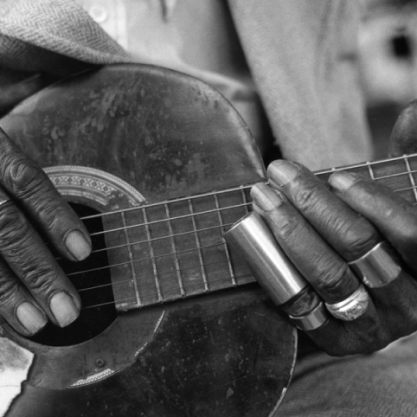
Get involved
& give back
The Music Maker Foundation is a 501(c)(3) nonprofit organization that depends on thousands of supporters. Together, we work to meet the day-to-day needs of the artists who create traditional American music, ensure their voices are heard, and give all people access to our nation’s hidden musical treasures. Please contribute or shop our store today.
